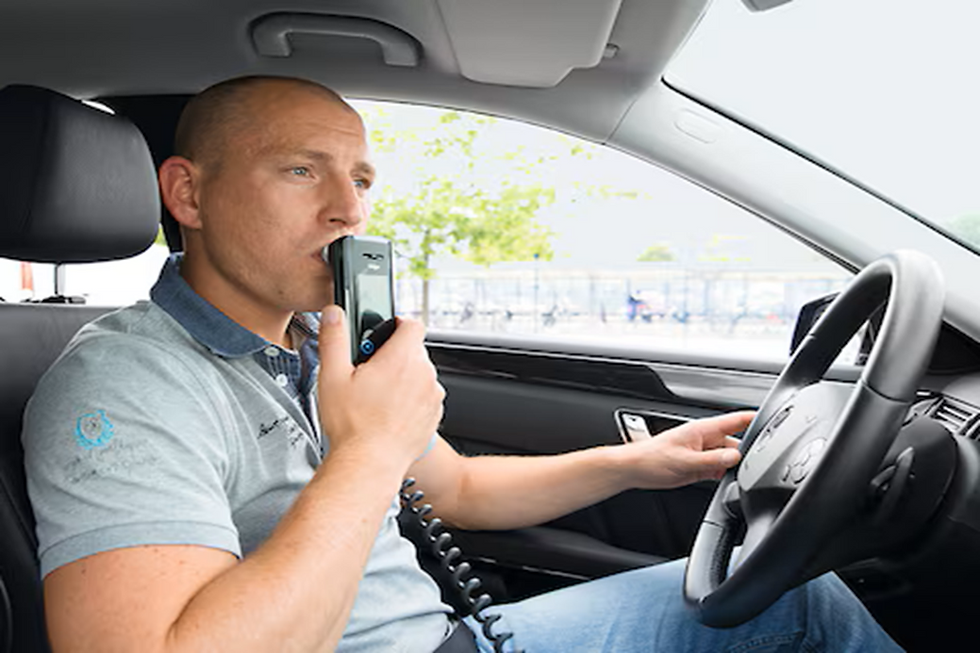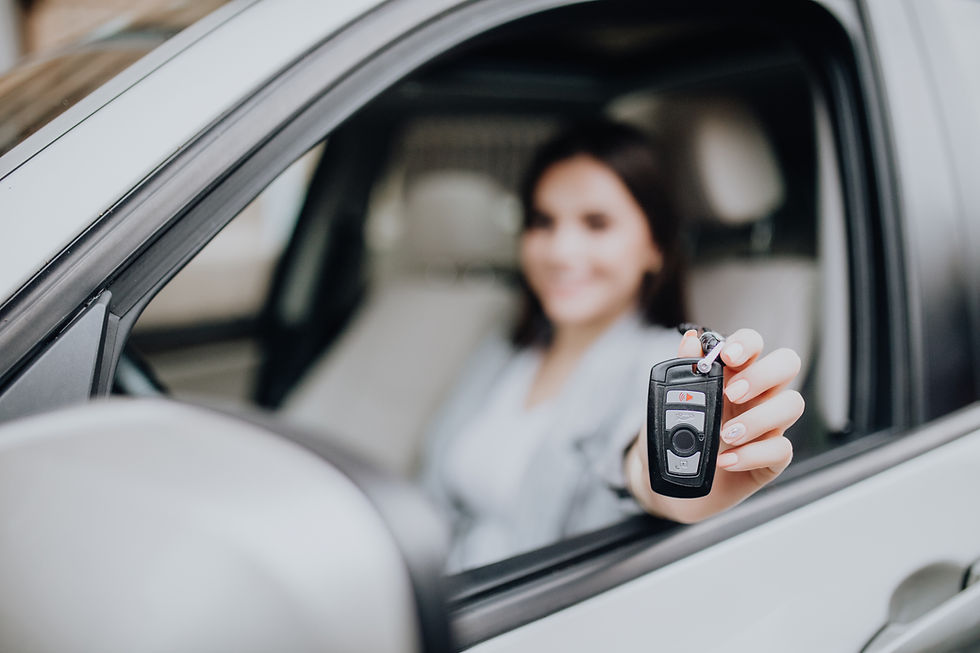How Drager Interlocks Improve Vehicle Safety
- zoehsewell
- Aug 12
- 5 min read

These aren't just hypothetical questions anymore. Alcohol interlock devices, particularly those manufactured by Drager, have revolutionized how we approach drink-driving prevention. These sophisticated devices represent a significant leap forward in vehicle safety technology, offering a practical solution to one of our most persistent road safety challenges.
Throughout this article, we'll explore the ins and outs of Drager interlocks and their crucial role in making our roads safer. You'll discover how these devices work, what makes Drager's technology stand out from the crowd, and who benefits most from their installation. We'll also look at real-world success stories, practical tips for living with an interlock device, and the legal requirements surrounding their use. By the end, you'll understand why these devices are becoming an essential tool in the fight against drink-driving.
What Are Drager Interlocks and How Do They Work?
At its core, a Drager interlock is an electronic breathalyzer that's connected directly to your vehicle's ignition system. Think of it as a sophisticated gatekeeper that checks whether you're fit to drive before allowing your car to start. The device requires drivers to provide a breath sample before the engine will turn over, measuring the alcohol content in their breath with remarkable precision.
What's particularly clever about Drager interlocks is their anti-circumvention features. The device can detect if someone other than the driver is providing the breath sample, thanks to sophisticated sensors and cameras. It also logs every attempt, pass or fail, creating a comprehensive record that can be reviewed by authorities or programmer administrators. This data provides valuable insights into driver behavior and helps identify patterns that might indicate ongoing alcohol issues.
The Drager Difference: Advanced Features That Set These Devices Apart
Not all interlock devices are created equal, and Drager has established itself as a leader through continuous innovation and reliability. Their devices incorporate cutting-edge technology that goes beyond basic breath testing. For instance, Drager interlocks feature advanced temperature sensors that function reliably in extreme weather conditions, from scorching summer heat to freezing winter mornings.
The user interface on Drager devices strikes an excellent balance between sophistication and simplicity. Clear digital displays guide users through each step of the testing process, whilst multi-language support makes sure drivers from diverse backgrounds can operate the device safely. The devices also feature quick warm-up times, meaning drivers aren't left waiting unnecessarily before they can start their journey. These might seem like small details, but they make a significant difference in daily use.
Who Benefits Most from Installing Drager Interlocks?
Whilst many people associate interlocks primarily with convicted drink-drivers, the reality is that these devices benefit a much wider range of individuals and organizations. Fleet operators, for instance, are increasingly turning to voluntary interlock programmers to protect their businesses and employees. By installing interlocks in company vehicles, they demonstrate a commitment to safety whilst potentially reducing insurance premiums and liability risks.
Parents of young drivers represent another group finding value in voluntary interlock installation. For families with concerns about teenage drinking and driving, an interlock provides peace of mind that their child cannot make a potentially fatal mistake. Some parents view it as a teaching tool, helping young drivers develop responsible habits around alcohol and driving from the start. The device serves as a constant reminder of the importance of sober driving.
How Do Drager Interlocks Prevent Drink-Driving Incidents?
The prevention mechanism of Drager interlocks operates on multiple levels, creating several barriers to drink-driving. The immediate prevention is obvious – if you've been drinking, the car won't start. But the psychological impact runs deeper. Knowing that the device is there changes behavior patterns, encouraging drivers to plan ahead and arrange alternative transportation when they know they'll be drinking.
The rolling retest feature adds another layer of protection. These random tests, required whilst the vehicle is in operation, prevent drivers from having a sober friend start the car for them. If a driver fails a rolling retest, the device doesn't shut off the engine (which would be dangerous), but it does trigger the vehicle's lights and horn, alerting other road users and law enforcement. This feature effectively extends the prevention throughout the entire journey, not just at the starting point.
Living with an Interlock Device: Practical Tips and Common Concerns
Adjusting to life with an interlock device requires some changes to your daily routine, but most users find they adapt quickly. One of the most important tips is to allow extra time for your morning routine. The device needs a few minutes to warm up, especially in cold weather, and you'll need time for the initial breath test. Building this buffer into your schedule reduces stress and helps you avoid being late.

Many users worry about explaining the device to passengers or colleagues. Honesty is often the best policy – most people are understanding and even supportive when they learn you're taking steps to drive safely. For those who prefer privacy, keeping the handset in a discrete location when not in use can help. Some users find that treating the device matter-of-factly, like any other safety feature in their vehicle, helps normalize it for passengers.
Success Stories: Real Impact on Road Safety
The real measure of Drager interlocks' effectiveness comes from the stories of lives changed and saved. Take the case of commercial fleet operators who've seen dramatic reductions in incidents after implementing interlock programmers. One major transport company reported a 95% reduction in alcohol-related incidents within the first year of installation, along with improved driver morale and reduced insurance costs.
Individual success stories are equally compelling. Many programmer participants report that whilst they initially resented the device, they came to appreciate how it helped them rebuild their lives. One participant shared how the interlock helped her maintain employment after a drink-driving conviction, as her employer was willing to keep her on knowing she couldn't drive whilst impaired. The device provided the accountability she needed to address her relationship with alcohol.
Conclusion
Throughout this exploration of Drager interlocks, we've seen how these devices represent far more than just technology – they're a practical solution to one of our most persistent road safety challenges. From their sophisticated breath-testing capabilities to their role in behavioral change, Drager interlocks offer a comprehensive approach to preventing drink-driving. The advanced features that set Drager apart, including superior accuracy, reliability in extreme conditions, and user-friendly interfaces, make these devices particularly effective tools for improving road safety.
Looking ahead, it's clear that interlock devices will play an increasingly important role in our road safety strategy. As technology continues to advance and social attitudes shift towards prevention rather than punishment, devices like Drager interlocks offer hope for a future with fewer alcohol-related tragedies on our roads. If you're facing the prospect of installing an interlock, remember that it's not just about meeting legal requirements – it's about being part of a larger movement towards safer roads for everyone. And if you're considering voluntary installation, you're taking a proactive step that could save lives, including your own.




Amigo Tyres is a Rocklea based store that supports truckers, families, and businesses with tyre replacement, repair, and mobile services. Visit the best truck wheel alignement in Rocklea !
Visit: https://amigotyres.com.au/services/tyre-rotation-service-in-rocklea , https://amigotyres.com.au/services/wheel-alignment-service-in-rocklea